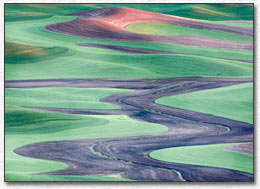 from Earthbound Light It has now been a year since the Eastman Kodak company declared bankruptcy. Now the company that revolutionized photography starting in 1888 with the motto “you press the button, we do the rest” is poised to revolutionize photography once again with their new secret weapon, a camera that takes that original motto to new heights.
from Earthbound Light It has now been a year since the Eastman Kodak company declared bankruptcy. Now the company that revolutionized photography starting in 1888 with the motto “you press the button, we do the rest” is poised to revolutionize photography once again with their new secret weapon, a camera that takes that original motto to new heights.
Cameras record memories, but until now they’ve been limited to recording only what is happening when the shutter is pressed. They can record motion over time so long as the shutter remains open, but when that final click happens the image becomes frozen in time.
But maybe it doesn’t have to be that way. The basic problem with traditional approaches to photography is that they fail to capture all the information that is available. They tell us only the sum total of what happened over a given exposure. A company named Lytro, founded by Ren Ng, Ph.D. recently made headlines by commercializing the Light Field Camera, a device capable of producing images that can be refocused later to any point by capturing information on all the light rays passing through a scene. What if it were possible to capture even some of the information passing through time as well? Traditional cameras merely blur movement that occurs while the shutter is open. But it may be possible to actually record that movement.
Early research along these lines was done by Eadweard Muybridge and others but they appear not to have reached viability based on at least one internet website. Kodak scientists have rethought the entire problem though. By sealing two special CCD sensors a mere few microns apart inside a vacuum, calculations deriving from the Casimir Effect enable images to be rendered from any point in time the shutter was open. Dubbed a “Quantum Field Camera” results so far have been mixed, but Kodak researchers have been encouraged by recent work with faster than light neutrinos by Prof. Antonio Ereditato and other leading scientists in Switzerland and Italy. Some concerns have been raised that recorder error resulted in a faulty measurement in the Swiss experiment, but it was just this angle that provided one of the last missing pieces to the Kodak research. After all, a camera is a kind of recorder.
Information about the Quantum Field Camera project, run out of the Kodak Image Sensor Solutions research facility in Fools Bay, New York, has been kept tightly under wraps but details are beginning to leak out in part due to the work of researcher Joseph Boskin, the Kugel Professor of History at Boston University. Its origins seem to stem from a collaboration dating from shortly after World War II between Wilhelm Keppler of Kodak, researchers from the University of Rochester and veterans from Project OXCART and NERVA run out of Nellis Air Force Base in southern Nevada. The technology for the Quantum Field Camera is clearly built at least in part on Kodak’s portfolio of 1,100 digital imaging patents. But period newspaper reports of this from the Groom Lake area are suspiciously hard to come by, leading conspiracy theorists to believe there is more to this than has so far been admitted.
Right now, it takes rooms full of equipment and an atomic reactor to create the images Kodak has produced. Apart from this, before a commercially viable product can be produced, other problems remain to be solved too. The resolution of images produced so far is less than optimal, an issue apparently related to the interaction of Heisenberg’s Uncertainty Principle with the Circle of Confusion. Lens flare has also been difficult to tame with specular highlights occurring mainly in the sky. The issue has reportedly been so hard to predict and to explain, developers have nicknamed these specular highlights “UFOs,” in humorous tribute to the rumors regarding the project’s origins. And at this point, software to generate images from this system is available only for Mac OS computers. The majority of Kodak researchers, who use the Windows operating system, are out of luck.
In a thought experiment intended to find answers to these problems, a photograph was made of a cat placed in a sealed box with a radioactive source and a Geiger counter linked to a container of poison, but the results were indeterminate.
A camera employing Quantum Field principals would in theory be very easy to operate since all the details could be determined in software later. Concept mockups envision a handheld rectangular box with an extruded anodized aluminum skin available in three stylish colors. The red one would have more memory. There would be no need for extraneous dials, modes or settings. It seem that the Kodak motto would come full circle with the complex technology currently being used by researchers being turned into something the average user could use easily.
Once the remaining issues are resolved though, the prospect of moving pictures looks good. Imagine being able to relive an event by seeing images of it recorded at different times. By rendering a series of such images and displaying them in rapid succession it is expected that someday devices could be created capable of displaying moving pictures, perhaps even with accompanying sound. It may even be possible to incorporate all the needed technology directly into a handheld digital camera to allow users to shoot movies (as they are called) at home. Maybe someday a digital camera can create more than just still images.